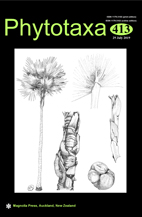Abstract
Classical and geometric morphometric analyses of floral characters of Salvia pratensis agg. were performed on populations from the E Adriatic area. Both types of analyses yielded congruent results, and three groups of populations, attributed to S. verbenaca, which served as an outgroup, S. saccardiana and S. pratensis (incl. S. bertolonii), were unambiguously identified. Results confirmed floral size dimorphism, with hermaphroditic flowers being significantly bigger than female ones, while we newly identified floral shape dimorphism in S. pratensis, too. No gynodioecious populations were observed in morphologically otherwise very uniform S. saccardiana. Being a SE Alpine endemic, the latter was for the first time recorded in Croatia. While S. saccardiana merits species rank, we found no support for the segregation of S. bertolonii and S. pratensis. Clinal variation in floral characters of S. pratensis, generally detected in populations of various taxa along the E Adriatic coast, lacks the spatial consistency and geographic pattern that would allow for a clear delimitation of S. pratensis and S. bertolonii.

